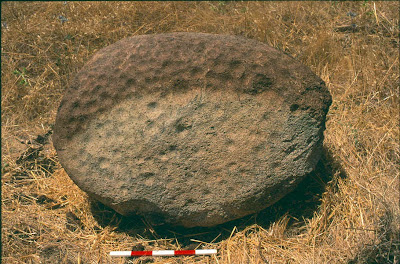Ditches are very interesting contexts for pollen analyses in
Alentejo (a dry area, and therefore not very good for pollen preservation).
Ditches can perverse humidity, helping the preservation of pollen.
In Perdigões, after a first study done by Jane Wheeler
(Wheeler, 2010) we applied for these
analyses through the Portuguese Laboratory of Archaeosciences (LARC) that
initiated a new program of scientific cooperation with the National
Archaeological community in 2012. For that a specific project was elaborated:
“Reconstitution of paleo-environments in Perdigões area.”
The collected samples in the excavations of 2012 were
already processed and the results are in press in the journal Apontamentos de
Arqueologia e Património that will be published next October 2013, being authors
Randi Danielsen and Patrícia Marques Mendes.
Sampling in ditch 6
They refer to the Neolithic contexts of Perdigões and
provide a quite relevant information about the landscape flora of the period in
the surroundings of the site.
Diagram of results from Randi and Mendes, in press.
In 2013 we continue to developed the project and new sampling
was made, now integrating Chalcoltic contexts. We hope to get a good picture of
the evolution of local landscape during the late fourth and 3rd millennium
BC and provide empirical data that help in the interpretations of the human
occupations and activities in this region.
2013 sampling in the Late Neolithic hypogeum structure
Bibliographic References:
Daneilsen, R. and Mendes, P.M. (in press), “Pollen
analysis of Late Neolithic ditch deposits from the Perdigões archaeological
site”, Apontamentos de Arqueologia e Património, ), Lisboa, NIA.ERA, p.13-20.
Wheeler, Jane (2010), "Paleoenvironmental
assessment of two archaeological sediments from Perdigões, Alentejo region,
Portugal", Apontamentos de Arqueologia e Património, 6, Lisboa, NIA-ERA
Arqueologia, p.41-45.

















